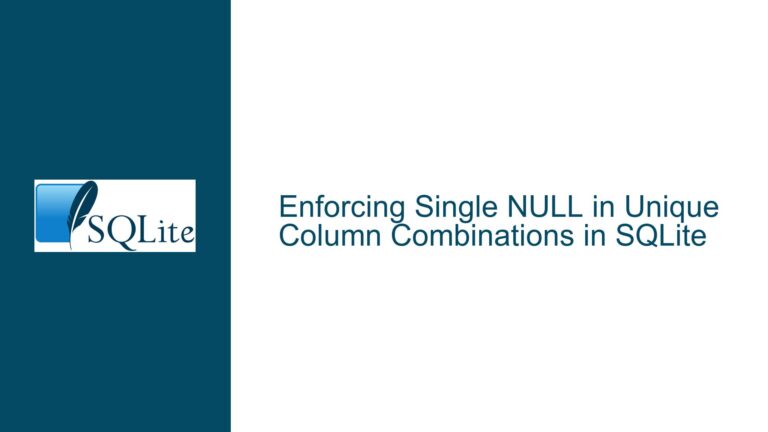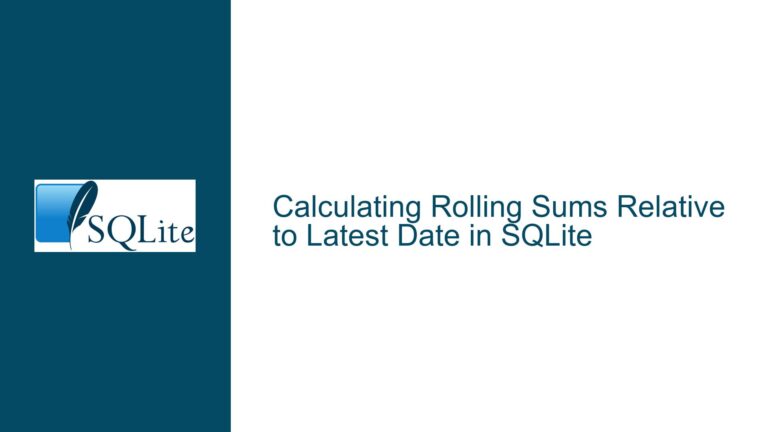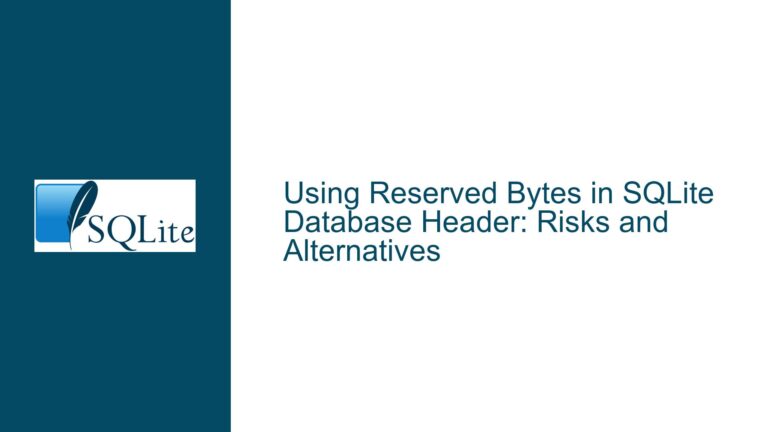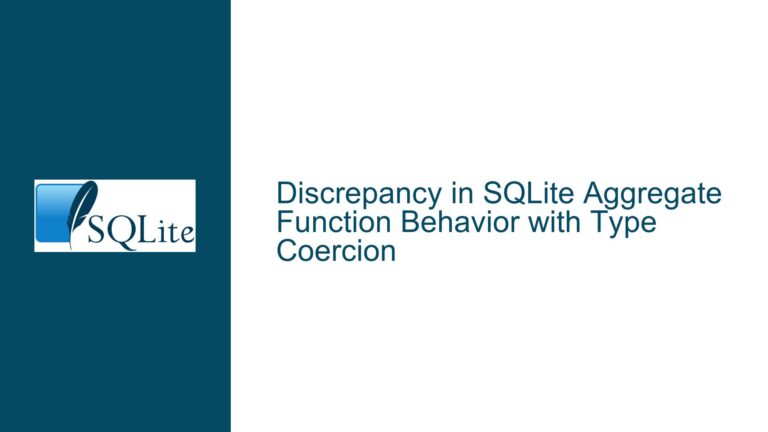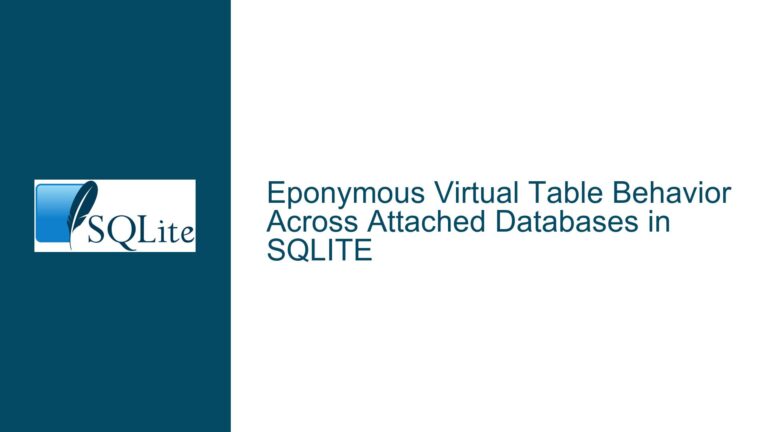Enforcing Single NULL in Unique Column Combinations in SQLite
Issue Overview: Unique Constraint with Single NULL Allowed in Multi-Column Index The core challenge involves enforcing a uniqueness constraint across a combination of columns where one column (z) allows NULL values, but only one row per group of related columns (x, y, epsgid) may have a NULL in z. This mimics PostgreSQL’s NULLS NOT DISTINCT…
